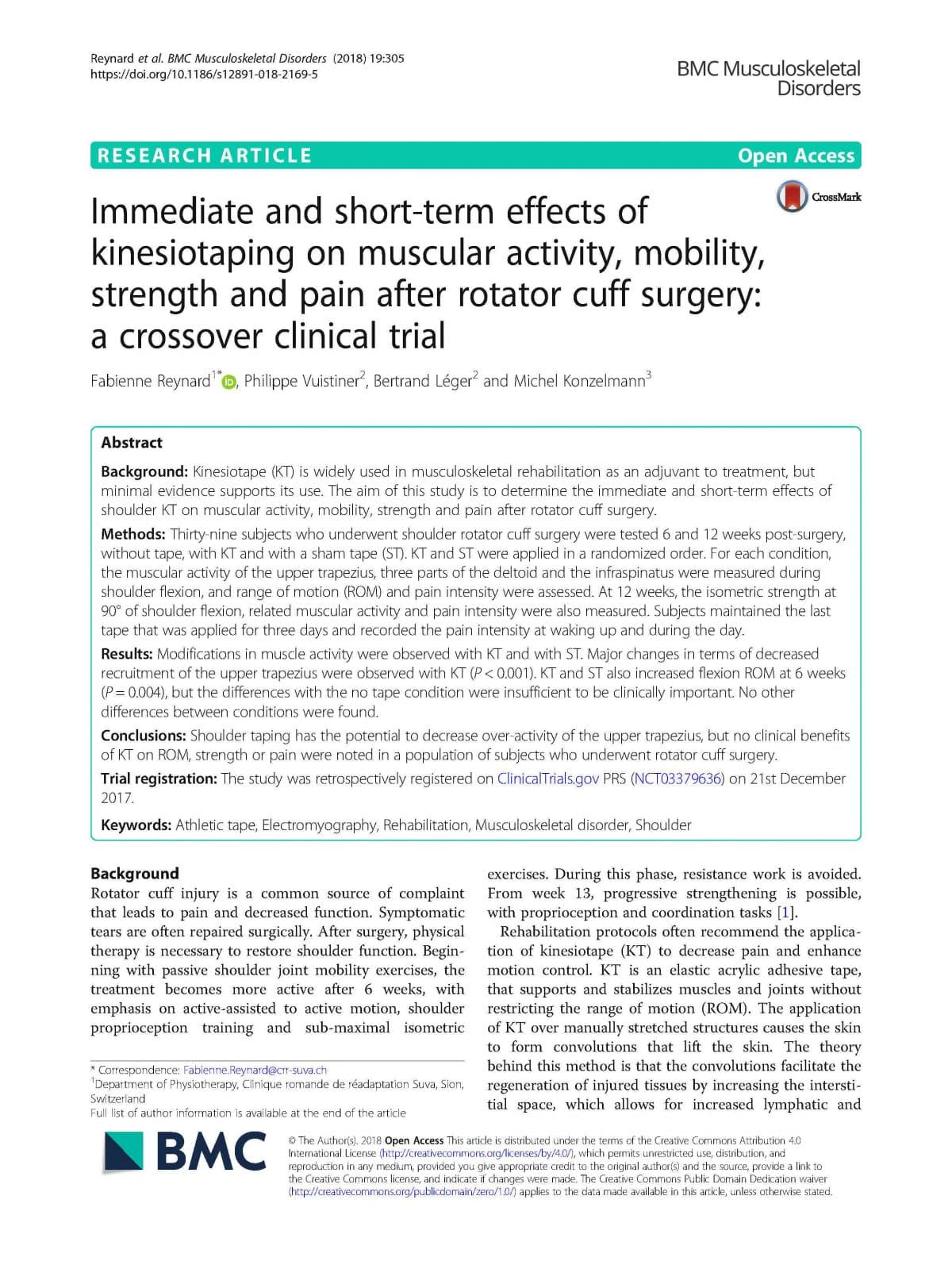Reynard et al. BMC Musculoskeletal Disorders (2018) 19:305
https://doi.org/10.1186/s12891-018-2169-5
Immediate And Short-Term Effects Of Kinesiotaping On Muscular Activity, Mobility, Strength And Pain After Rotator Cuff Surgery: A Crossover Clinical Trial
Fabienne Reynard1* , Philippe Vuistiner2, Bertrand L ger2 and Michel Konzelmann3
Abstract
Background: Kinesiotape (KT) is widely used in musculoskeletal rehabilitation as an adjuvant to treatment, but minimal evidence supports its use. The aim of this study is to determine the immediate and short-term effects of shoulder KT on muscular activity, mobility, strength and pain after rotator cuff surgery.
Methods: Thirty-nine subjects who underwent shoulder rotator cuff surgery were tested 6 and 12 weeks post-surgery, without tape, with KT and with a sham tape (ST). KT and ST were applied in a randomized order. For each condition, the muscular activity of the upper trapezius, three parts of the deltoid and the infraspinatus were measured during shoulder flexion, and range of motion (ROM) and pain intensity were assessed. At 12 weeks, the isometric strength at 90 of shoulder flexion, related muscular activity and pain intensity were also measured. Subjects maintained the last
tape that was applied for three days and recorded the pain intensity at waking up and during the day.
Results: Modifications in muscle activity were observed with KT and with ST. Major changes in terms of decreased recruitment of the upper trapezius were observed with KT (P < 0.001). KT and ST also increased flexion ROM at 6 weeks (P = 0.004), but the differences with the no tape condition were insufficient to be clinically important. No other differences between conditions were found.
Conclusions: Shoulder taping has the potential to decrease over-activity of the upper trapezius, but no clinical benefits of KT on ROM, strength or pain were noted in a population of subjects who underwent rotator cuff surgery.
Trial registration: The study was retrospectively registered on ClinicalTrials.gov PRS (NCT03379636) on 21st December
2017.
Keywords: Athletic tape, Electromyography, Rehabilitation, Musculoskeletal disorder, Shoulder
* Correspondence: Fabienne.Reynard@crr-suva.ch
1Department of Physiotherapy, Clinique romande de r adaptation Suva, Sion, Switzerland
Full list of author information is available at the end of the article




